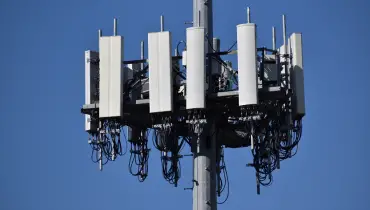How Big of a Deal Is Ad Fraud?

In 2020, worldwide damages from ad fraud reached a whopping $35B, according to Statista. Other approximations differ - Juniper/TrafficGuard estimates it to be $34B, rising to $87B by 2022.
According to these reports, the majority of this damages from ad fraud will be lost in the Asia-Pacific area, where the present $19B is expected to climb to $56B. By 2025, it's expected that ad fraud would cost more than $50B every year.
Most businesses believe that ad fraud doesn’t affect them in any shape or form. However, it’s likely that ad fraud could be slowly and methodically gnawing away at your budget, whether you are a marketer managing online campaigns, a corporation, or a startup.
What Exactly Is Ad Fraud?
Any effort to mislead online advertising systems for monetary advantage is referred to as ad fraud. Unfortunately, many sites are financed by ad revenue, and many businesses invest significant sums of money in advertisements in the hopes of improving profitability. Ad fraud negatively affects both businesses and websites.
Online ads are heavily reliant on algorithmic exchanges to connect content with prospective clients. Ad fraud exploits these automated systems to impersonate actual users and profit from the broadcast of ads to nonexistent clients.
Common ad fraud strategies involved include bots and a variety of other tactics to deceive ad networks and advertisers into paying them. As a result, marketers are stuck paying for ads that are shown to fake visitors.
On the other hand, publishers will see an unusual rise in ad payments. Marketers will eventually begin to analyze the number of ads they think was shown to IVT (invalid traffic).
IVT rates will be detected by advertisement exchanges, and if they're unusually high, websites will be blocked from gaining access to the exchange.
Let's outline the major types of ad fraud that businesses are prone to experience in online advertising.
- Domain spoofing – counterfeiting an email domain or site name to deceive users.
- Malicious bots – click ads and spam bots that imitate humans and execute malicious attacks.
- Location fraud – faking location details to deceive ad vendors of the location of the user.
- Ad stacking – overlapping several adverts simultaneously and requesting payment for fake impressions.
- Pixel stuffing – stuffing a complete advert into the space meant for a single pixel while requesting the complete amount for it.
- Cookie stuffing – placing several affiliate cookies on visitor’s browsers to earn a commission.
Four Ways Ad Fraud Can Wreck Your Company’s Profits
What effect will the various types of ad fraud have on your company’s profitability? Below are some of the possible consequences of ad fraud:
1. Eating up advertising funds
Perhaps, the single most significant effect of most types of advertising fraud is the fact that it wastes financial resources while providing no results.
Several types of advertising fraud earn credit for totally unconnected website visits (ad stacking, pixel stuffing, and cookie stuffing), make artificial impressions and clicks (location masking, click injection, and so on), or dramatically inflate the cost of clicks or impressions on mediocre websites (domain spoofing).
2. Wasting valuable time chasing non-profitable leads
Sales staff must concentrate on prospective leads to generate revenue swiftly and reliably. Advertising fraud produces mostly completely fraudulent leads with no interest in the products at all.
If undiscovered, the sales team could be wasting time on mediocre leads from fake sources. Additionally, all the fake leads would heavily scramble the data and cause confusion for marketing departments.
3. Impacts the company's reputation negatively
Prospective clients, business associates, and shareholders may shun a company as a result of reputational harm, which can have a major effect on its profitability. Being linked to an advertising injection scam may be damaging to a company's image over time.
In addition to that, advertisements that run on websites that are inappropriate for the company can also harm the public reputation of the company.
4. Legal costs
Retrieving money from cybercriminals is an arduous task. After a thorough investigation, filing a case against an individual or syndicate that has acted illegally will necessitate considerable (and frequently costly) legal assistance.
Of course, the opposing party will do everything in their power to avoid judgment. Even if caught, sometimes they might be in a financially compromised position, making it impossible for the lost money to be reimbursed.
Ad Verification and Its Role in Fighting Against Ad Fraud
Just like ad fraud, ad verification features several clever ways of preventing and tracking down ad manipulation. Ad verification and ad fraud appear to be in a continuous race to compete on who can outmaneuver and outsmart the other. While the race continues, novel solutions are finding their way to the frontlines, and residential proxies are one of such.
As each residential proxy is created by a different device, there is a wide range of IPs and locations available. Ad verification companies can rest easy if they use a large enough pool (e.g. the Oxylabs pool is over 100M different IPs) as they will be able to avoid any possible IP blocks from fraudsters. Additionally, they may check ads from any geographic location if necessary.
Put simply, ad verification companies run batches of tests on websites that display advertisements. They use residential proxies to visit the website from many different locations to ensure that ads are not being displayed in unintended countries (or if fraudulent strategies are not being employed within a limited region). Companies also use data to analyze whether the display is according to campaign settings (e.g. site context, viewability, ad placement, etc.).
In its essence, ad verification rests on the premise that fraudsters will continue to do their thing, regardless of how complex or unethical it may be. As long as it remains profitable, ad fraud is going to continue. Therefore, in order to stem the losses inflicted, they charge a significantly smaller amount to keep company funds and marketing efforts safe.
Conclusion
Ad fraud is going to continue rising, especially since more companies are undergoing digital transformations. With online’s increasing importance there will surely be a rise in those looking to illegally profit.
Therefore, ad verification companies, and, in turn, residential proxies have become a vital part of the online marketing ecosystem. While we can’t expect ad fraud to suddenly collapse, we can expect that improvements in cybersecurity technology will reduce the negative impact.

















![Start a Career in Gaming Industry: Tips & Best Employment Opportunities [node:title]](/sites/default/files/styles/video_thumbnail_bottom/public/gamer-playing-first-person-shooter-tournament-using-rgb-keyboard-headphone-3933.jpg?itok=PbcL-V2p)




